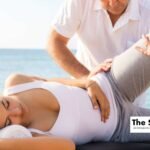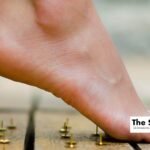Author: The Stance Integrated Pain and Spine Clinic, Koramangala, Bangalore Date: 2020-08-11
Slip Disc Treatment Without Surgery
What are the Options?
What is the Slip Disc Problem?
A slipped disc occurs when the outer ring grows weak or torn and allows the inner portion to slip out. There are different reasons for one to develop a slipped disc. A series of bones referred to as the vertebrae make up your spinal column. The entire column included seven bones in the cervical spine, twelve in the thoracic spine, five in the lumbar spine then the sacrum and the coccyx from top to bottom. There are discs that protect these bones by acting as a shock absorbers. There are two parts to this disc- the inner soft gelatinous section and the outer ring which is tougher. Some injury or weakness can cause the inner portion of the disc to protrude through the outer ring. This condition is referred to as slipped, prolapsed, or herniated disc.
With age, the discs begin to lose some of their protective water content because of this the discs slip out of place easily.
Inappropriate movements like twisting or turning can also result in a slipped disc.
What are the risk factors for a slipped disc?
Obese or overweight people also run the risk of slipped discs since their discs are not able to support the additional weight.
A poor and inactive lifestyle and weak muscles also can cause a slipped disc.
Heavy lifting and other activities that are physically demanding are also major factors.
Injuries like sudden jerking movements can also cause slipped discs.
Sometimes some people inherit a predisposition to developing a herniated disc.
Driving too often is another major factor. A combination of being seated for long periods and the vibrations and movements of the car can damage the discs and spinal structure.
Smoking reduces oxygen supply to the discs causing grinding down of the tissue which can hence cause slipped discs.
Signs and Symptoms of Slip Disc
From the neck to the lower back, slipped discs can occur anywhere. There are a lot of nerve fibres and blood vessels running through the spinal column. A slipped disc will naturally exert extra pressure on the nerves and muscles around it.
Pain is accompanied by a lack of sensation or numbness on one side of the body.
Pains that inflame with the night or with certain movements.
Tingling, burning, or aching in the affected area.
Pain during walking.
Muscle weakness that cannot be explained.
Pains that spread through your limbs.
Pain that gets aggregated after standing or sitting.
Severe neck pain causing disruptions in movements.
Sneezing or coughing may send sharp pains down the spine.
Injury is when you fall from a height and land on your buttocks.
Slipped discs owing to accidents could occur irrespective of any particular age bracket. But according to statistical records, slipped discs majorly happen to men between 20-50 years of age.
Ways to Prevent Slip Disc
You can avoid slip discs by following these very simple preventive measures:
Maintain a healthy weight. Exercise daily and have a balanced diet
Maintain good posture always. Keep your back straight while sitting and lift heavy objects with your leg muscles. Do not exert extra pressure on your backbone.
Chiropractic adjustment fixes the body at a deep cellular level and helps in musculoskeletal management, particularly back and neck pain. Chiropractic/Osteopathic Spine Manual Adjustment procedure affects oxidative stress and DNA repair thereby providing respite from Slip Disc troubles.
Generally, to diagnose a slip disc scenario following methods are advised
X-Ray, Computed Tomography Scan or CT scan, Magnetic Resonance Imaging (MRI), Electromyogram and Nerve Conduction Studies, and Myelogram
Treatment Options for Slip Disc
While surgeries are possibly the last resort when it comes to back pain relief, you should be aware that less than a mere 5% of patients actually need surgery. Severe spinal stenosis, Herniated discs, Tumors, and spinal deformities can warrant such intervention. Most patients with slipped discs undergo conservative treatment that does not involve surgery.
Nonsurgical treatment methods include:
- Exercise
- Relaxation
- Positioning
Contradictory to old beliefs and methods, most doctors these days recommend their patients to exercise and carry out their daily activities instead of subjecting them to bed rest which only weakens their muscles and bones. According to research, staying active increases and improves mobility. Relaxation exercises and maintaining correct posture are highly effective in reducing back pain.
Physical Therapy
This type of therapy is also referred to as passive therapy. Manual treatment includes massages and special techniques for loosening up tightened muscles or locked joints. �Soft Tissue Rehabilitation� one of the most effective Chiropractic treatments is specifically targeted at preventing or minimizing permanent impairment and disabilities caused due to Slip Discs. Finger pressure techniques involving the application of slow thrust or gradual mobilizing techniques are highly effective therapies
Spinal Manipulations
Chiropractors or osteopaths may also help release the pain using the spinal manipulation method along with manual therapy and therapeutic exercises. Some other techniques used by chiropractors include Flexion-distraction Technique, Manipulation Under Anesthesia, and Pelvic Blocking Techniques.
Traditional Asian Medicine like Ancient Chiropractic and Osteopathy Spinal Manipulation and Massages.
Anti-inflammatory Drugs
There are a number of painkillers, muscle relaxants, and anti-inflammatory drugs that provide quick relief from acute pain conditions. Non-prescription drugs include Acetaminophen or paracetamol or Non- steroidal anti-inflammatory drugs (NSAIDs) like ibuprofen, diclofenac, and naproxen. Prescription drug options consist of opioids, muscle relaxants like tetrazepam, steroids, anticonvulsants, and antidepressants. Anticonvulsants and antidepressants are not used until the symptoms last for a very long time.
Injections
Injection therapy makes use of local anaesthetics or anti-inflammatory medications which when injected near the affected nerve root, numbs the pain. There are two ways of doing this- Lumbar Spinal Nerve Analgesia and Lumbar Epidural Analgesia.
Concluding Thoughts
A sedentary lifestyle involving prolonged (and bad) sitting postures, and lack of exercise is a key reason behind the back, neck, and muscle pains. Well, it’s not just back pain. Such a lifestyle substantially increases the chances of weight problems, joint ailments, nerve problems such as carpal tunnel syndrome, etc. The disproportionate distribution of force, along with your body, puts unnecessary pressure along the cervical spine leading to internal wear and tear along with overall poor health.
How THE STANCE can help in reducing disc pain?
There are various and numerous reasons for lower back pain, which can arise from various structures. There is a distinct characteristic of spine pain and sometimes most of the pain reflects the same issues, like spam in the lower back, difficulty in standing, and walking, inability to stand straight, not being able to stand or sit for a longer time, sometimes the spine can be bent to one side. The correct diagnosis to address the issues as early as possible and then correction of the source of the pain must be corrected before it affects surrounding spinal discs and bones and ligaments. The Stance offers appropriate diagnosis, consultation with specialists, and non-surgical treatment for common and complex spine injuries which does not need surgery.
For the first time, STANCE brings the cost-effective and clinically proven osteopathic and integrated medicine approach to the lower back, and neck pain, and common and complex spine issues.
“Our approach has not only simplified the treatments but it also actively involves the patients to recover by our very simplified, yet very dynamic treatment protocols.”





